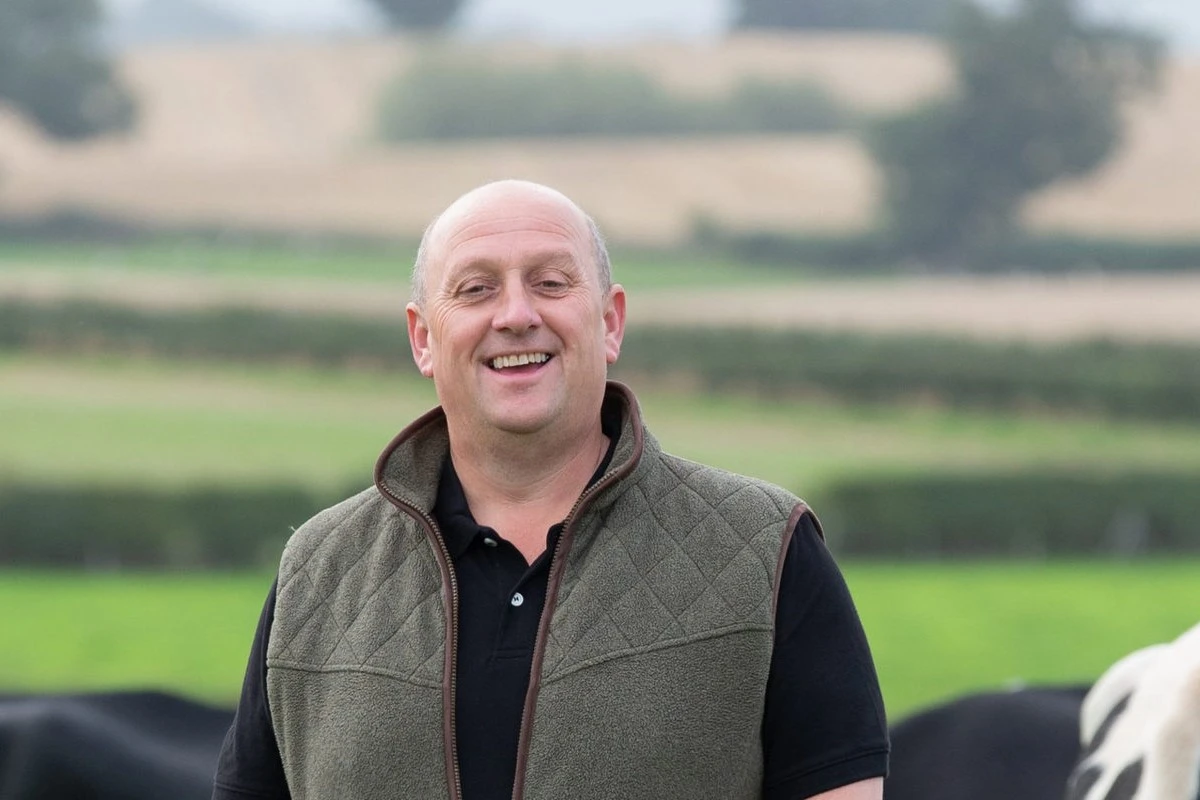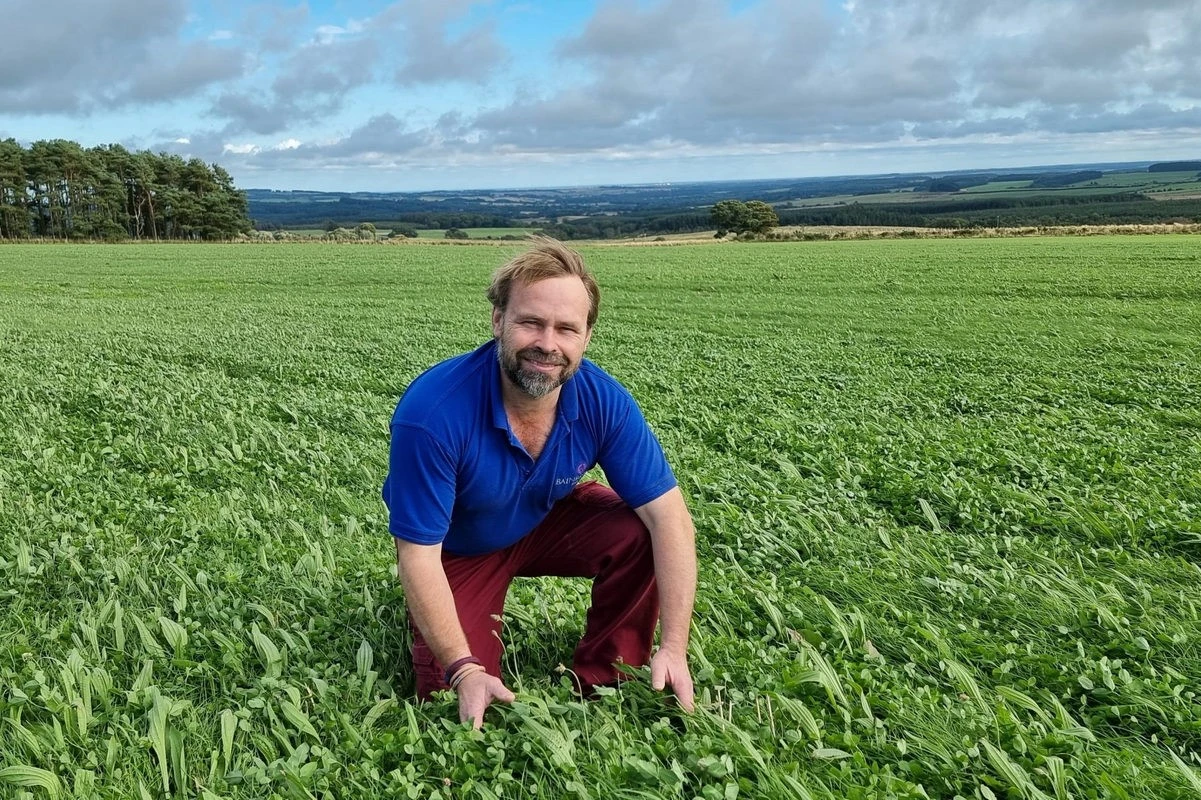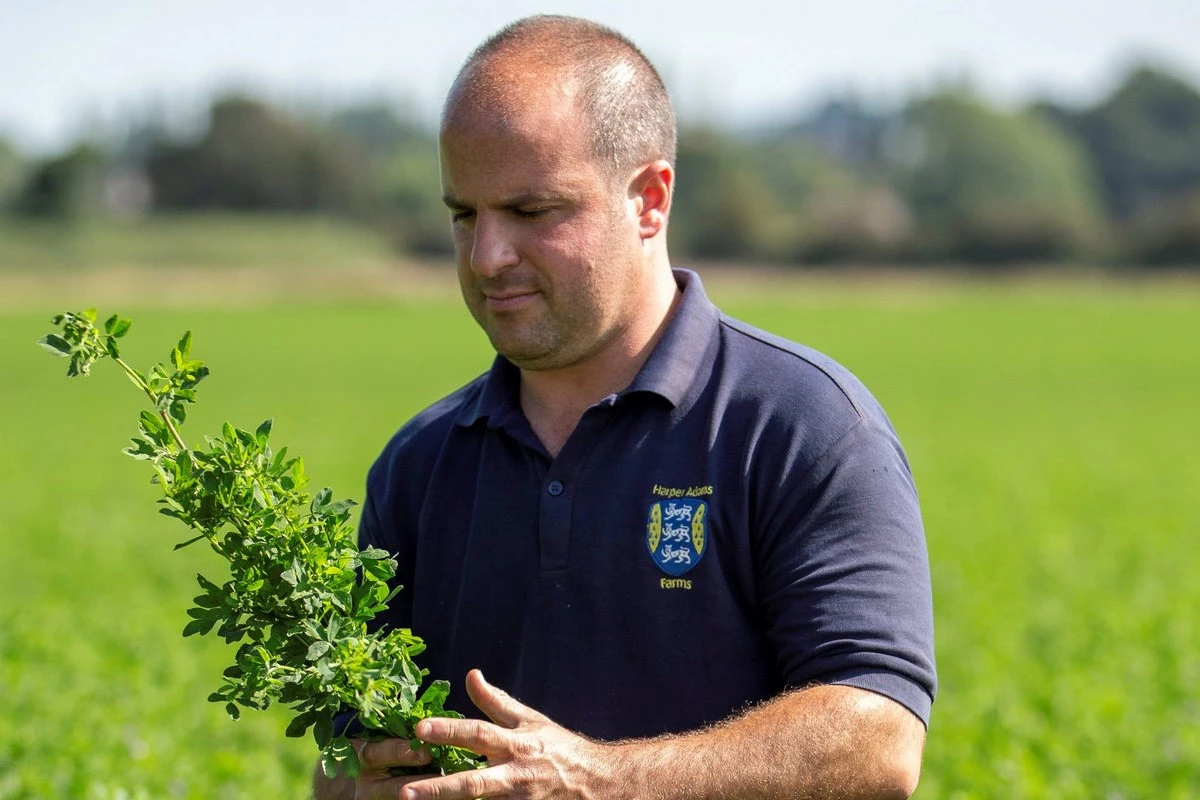Grassland farmers have been faced with rising input costs and supply issues over the past few years, especially when it comes to nitrogen fertiliser. Looking forward, it is worth considering the establishment of nitrogen fixing legumes to safeguard livestock production while also reducing emissions.
The primary goal of producing high-protein, homegrown forages is to reduce reliance on bought-in protein sources, but there are other benefits.
The nitrogen fixation of legume crops offers great potential for improving nitrogen-use efficiency (NUE), reducing the need for artificial fertiliser.
Nitrogen fixing legumes can be grown alongside perennial ryegrass and multi-species swards. Examples of legume crops include red and white clovers, lucerne and vetch – let’s look at some of them in more detail.
Clovers fix nitrogen
Many livestock farmers enjoy the benefits of including red and white clover in both their grazing and cutting leys. Clover plants convert atmospheric nitrogen into a plant-useable form and fix it in the soil.
With the potential to supply up to 150kg nitrogen/ha, clover reduces both the requirement and associated cost of fertiliser applications without impacting grass yield. In fact, if too much nitrogen is available in the soil, clover will not fix its own.
If you reseeded in autumn, it’s still possible to include red and white clover in the new ley by overseeding it in summer, preferably after cutting.
Adding in clover after a new ley has established is often overlooked, but the financial and environmental gains from increased productivity and reduced inputs make it a useful part of good grassland management.
To include red clover in a spring reseed, start considering varieties now. Look for a high-quality variety like AberClaret red clover, which can persist for up to four to five years.
And to aid persistency, allow it to flower at least once a year as this helps build root reserves. Red clover partners well with perennial ryegrass, resulting in higher quality silage, as its growth patterns and heading dates align better than with Italian ryegrass varieties.
Like red clover, white clover is best grown as a companion to perennial ryegrass. Germinal’s Aber High Sugar Grass (Aber HSG) mixtures are offered with white clover as standard, with additional clover blends, AberDairy, AberPasture and AberSheep, available to suit specific farming requirements.
“I’ve been integrating red clover into our swards for the past couple of years and have been really impressed with the results. It now forms a central part of our system and has really helped increase sward protein content.” Rob Beavan, Shropshire

Multi-species swards contain legume crops
Multi-species swards also fit well with the current pressure to produce food efficiently and sustainably, while meeting livestock needs.
These diverse swards contain nitrogen fixing legumes alongside grasses and herbs. As well as red clover, Germinal’s Aber HSG Multi-Species mixtures contain an annual white clover and vetch to boost dry matter production in the first year.
“We use multi-species to finish lambs and have definitely seen a noticeable difference with an increase of about 1kg deadweight per head.” Simon Bainbridge, Northumberland

Growing a lucerne crop
Like clover, lucerne also fixes nitrogen, supplying up to 150 kg N/ha. This improves nitrogen availability for follow-on crops in a rotational system.
And, with its high protein levels and rumen-friendly scratch factor making it highly digestible, lucerne is a viable alternative to imported protein.
Lucerne is primarily grown as a silage crop due to the potential for poaching, although can be grazed successfully at five to six-week intervals.
It is suited to all types of soil with a pH of at least 6.2 but must be grown on ground that drains well and sown when soil temperatures are above 8°C. In the UK, this is normally between May and the end of August.
“Lucerne has a great place in the cows’ diet and it’s reduced our input costs. Across our 400 cows, we’ve saved £50,000 from reducing protein in the concentrate by around 1kg/cow per day.” Chris Ruffley, Shropshire

Preparing for spring with legume crops
Including nitrogen fixing legumes in a rotation is a significant way for farmers to drive production and reduce the need for inputs. If you are aiming to maximise the benefits of homegrown forage, autumn is the time to take stock, review sward performance and plan for next year.
Which swards performed well? Which fields might benefit from a reseed in the spring? Do you need to make any changes to your forage cropping next year? And how do legumes fit into your plans?
“Grass is the cheapest feed we produce, but we need to make sure it is as good as it can be, and targeted fertiliser use helps achieve this. We are working on reducing our use of nitrogen inputs, as we are aware this is a big issue in the industry. Nitrogen use is at 170 kg/Ha on our multi-species swards, compared to the farm average of about 204 kg/Ha.” Rheinallt Harries, Carmarthenshire

Ask us about nitrogen fixing legumes
